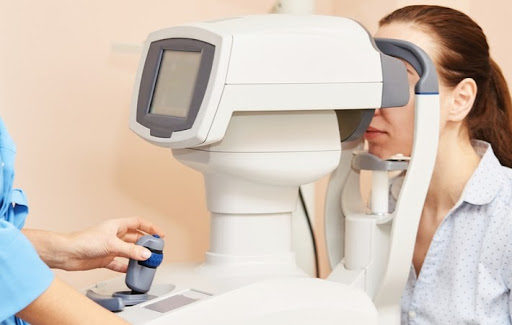Optical Coherence Tomography: A Valuable Tool in Ophthalmology
- 730 Views
- Apollo Hospital Mumbai
- November 3, 2023
- Ophthalmology

Optical coherence tomography (OCT) is a non-invasive imaging technique that uses light waves to create high-resolution cross-sectional images of the back of the eye, also known as the retina. It is a quick and painless procedure that can be used to diagnose and monitor a variety of eye conditions, including:
- Glaucoma
- Macular degeneration
- Diabetic retinopathy
- Retinal detachment
- Optic nerve disease
- Choroidal neovascularization
- Uveitis (intraocular inflammation)
- Tumors of the eye
How does OCT work?
- OCT works by sending a beam of light into the eye and measuring the amount of light that is reflected back. The reflected light is then used to create a detailed image of the retina and other structures in the back of the eye.
- OCT is a valuable tool for ophthalmologists because it allows them to see inside the eye without the need for surgery or injections. This makes it an ideal way to diagnose and monitor eye diseases in their early stages, when they are most treatable.
How is OCT used in ophthalmology?
It can be used to:
- Measure the thickness of the retina and other structures in the back of the eye
- Detect changes in the shape of the retina or optic nerve
- Identify areas of inflammation or bleeding
- Visualize tumors and other abnormalities
- OCT can also be used to guide treatment and monitor the response to treatment. For example, in patients with glaucoma, OCT can be used to measure the amount of damage to the optic nerve and to monitor the response to glaucoma medications.
Benefits of OCT
OCT has a number of benefits over other imaging techniques, such as ultrasound and magnetic resonance imaging (MRI).
- OCT is non-invasive, painless, and does not require the use of radiation. It is also relatively fast and inexpensive.
- OCT also has a number of advantages over traditional eye exams. For example, OCT can provide a more detailed view of the retina and other structures in the back of the eye. It can also detect changes in the eye that are too small to be seen with a traditional eye exam.
- Early detection: OCT can detect changes in the eye that are too small to be seen with a traditional eye exam. This means that eye diseases can be diagnosed and treated earlier, when they are most treatable.
- Improved accuracy: OCT provides more accurate measurements of the retina and other structures in the back of the eye than traditional eye exams. This can lead to more accurate diagnoses and treatment plans.
- Reduced need for invasive procedures: OCT can be used to monitor eye diseases without the need for invasive procedures such as biopsies. This can reduce the risk of complications and improve patient comfort.
If you are concerned about your eye health, talk to our eye specialist, Dr. Abhishek Hoshing, Consultant Ophthalmology, Apollo Hospitals, Navi Mumbai.
Call 022 6280 6280 for an appointment.
Search
Recent Posts
- November 25, 2024
Multiple Sclerosis (MS): Early Detection and Treatment Matter
- November 25, 2024
Pediatric Kidney Disease: Causes, Symptoms, and Treatment
- November 25, 2024
Obstructive Sleep Apnea (OSA): What You Need to Know?
- November 25, 2024
What is Inflammatory Bowel Disease (IBD) and How Does it Affect You?
- November 25, 2024
How Can You Boost Your Immunity for Better Health?
Categories
- Bone Marrow Transplant3
- Cardiac sciences44
- Child Care7
- Clinical Excellence33
- Cosmetology2
- COVID-199
- Diseases4
- Emergency8
- Emergency10
- Endocrinology1
- ENT5
- Fetal Medicine1
- Gastroenterology7
- General Medicine10
- General Surgery3
- Genomic Medicine2
- Gynecology1
- Health14
- Hematology2
- Kidney Transplant5
- Kidney Transplant2
- Liver Transplant6
- Neonatology1
- Nephrology2
- Nephrology & transplant1
- Nephrology & Urology4
- Neurosciences1
- Neurosciences21
- Nutrition/Diet1
- Obstetrics & Gynecology9
- Obstetrics & Gynecology4
- Oncology92
- Oncology3
- Ophthalmology1
- Orthopedic13
- Patient Speak1
- Pediatric Surgery4
- physiotherapy2
- Psychologist2
- Pulmonology2
- Rheumatology1
- Robotic Suregry1
- Robotic Surgery11
- Spine1
- Uncategorized111
- Women Care5
